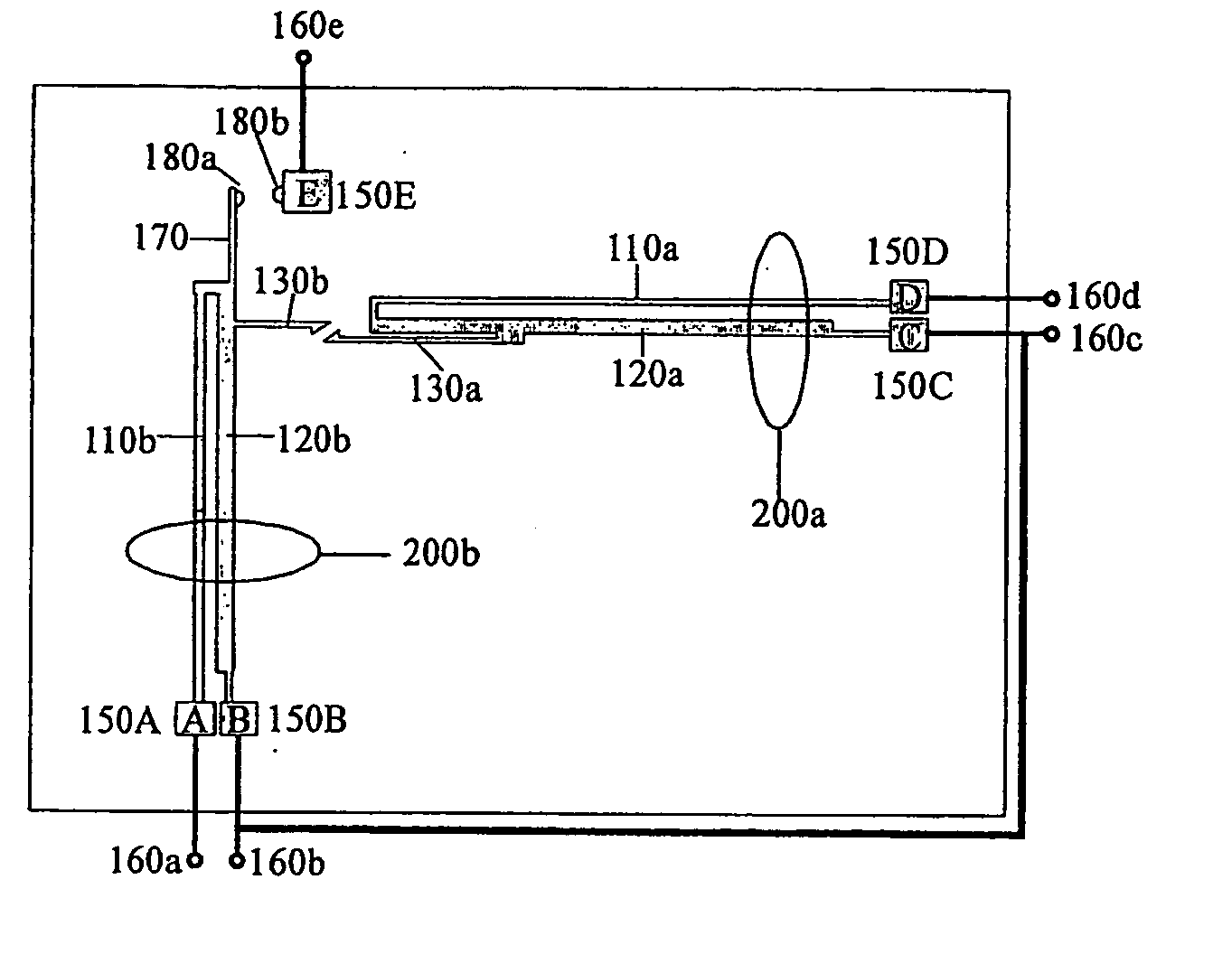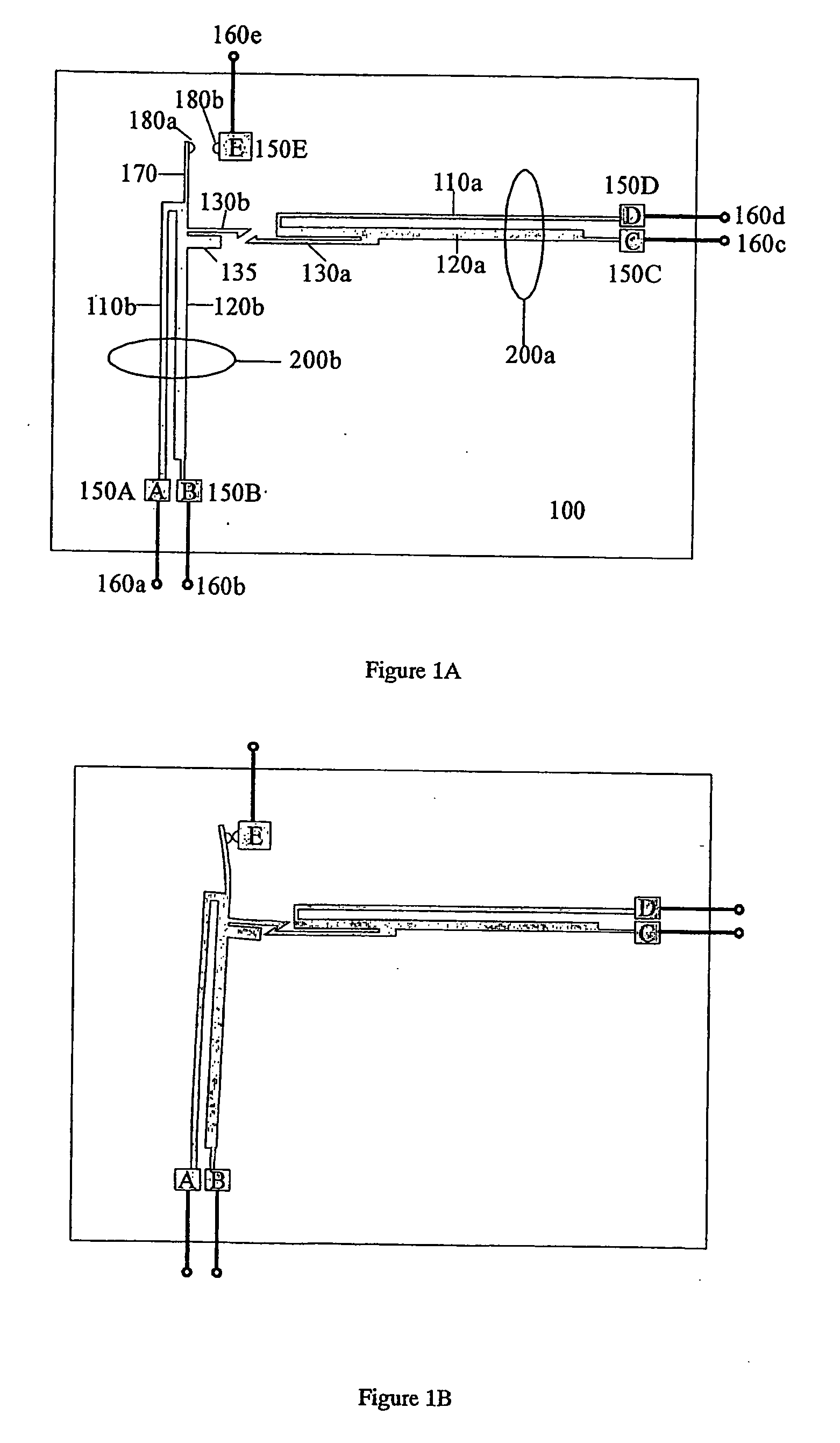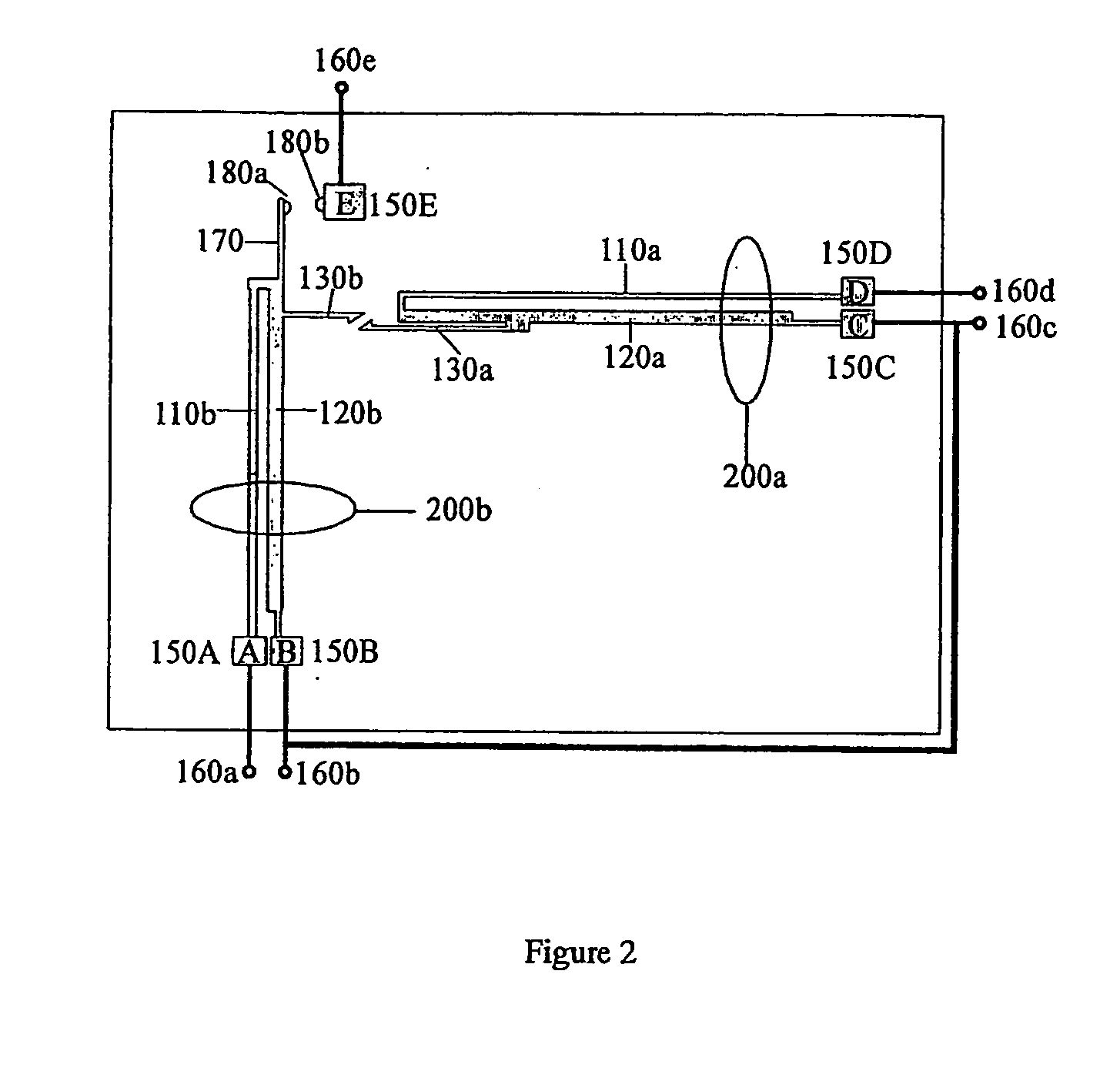Microengineered self-releasing switch
a self-releasing switch and micro-engineered technology, applied in the field of switches, can solve the problems of excessive current demand, excessive size and cost of circuit breakers currently manufactured, and limited operation sophistication
- Summary
- Abstract
- Description
- Claims
- Application Information
AI Technical Summary
Benefits of technology
Problems solved by technology
Method used
Image
Examples
Embodiment Construction
[0052] Referring in detail to the drawings where similar parts are identified by like reference numbers, there is seen in FIGS. 1A and 1B a diagram of a circuit breaking switch in its open and closed position respectively. The switch is mounted in such a way as to present a number of electrical terminals 160 for connection to a printed circuit board or otherwise for connection to external electrical circuits. These terminals could be for example the pins of a standard semiconductor package of a type used conventionally for mounting of integrated circuits on printed circuit boards. Terminals 160d and 160e provide the power supply and load connection respectively, such that the purpose of the switch is to prevent excess current levels from flowing from the supply to the load. Each external terminal 160 is electrically connected, for example by wire bonding, to a fixed anchor 150, each anchor being a part mechanically fixed to, but electrically isolated from, the substrate. The substra...
PUM
 Login to View More
Login to View More Abstract
Description
Claims
Application Information
 Login to View More
Login to View More - R&D
- Intellectual Property
- Life Sciences
- Materials
- Tech Scout
- Unparalleled Data Quality
- Higher Quality Content
- 60% Fewer Hallucinations
Browse by: Latest US Patents, China's latest patents, Technical Efficacy Thesaurus, Application Domain, Technology Topic, Popular Technical Reports.
© 2025 PatSnap. All rights reserved.Legal|Privacy policy|Modern Slavery Act Transparency Statement|Sitemap|About US| Contact US: help@patsnap.com



